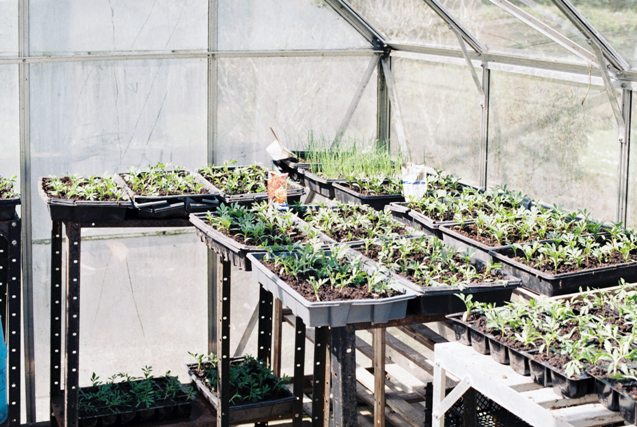
Growing vegetables in a greenhouse can be a fun and productive hobby. In general, greenhouses allow cultivators to extend the growing season. In greenhouses where supplemental lighting and heating are used, vegetables can be grown year round. When supplemental lighting and heating elements are not used, the gardener’s climate zone ultimately dictates which crops will do the best.
Many vegetable varieties will thrive in a greenhouse environment. When selecting vegetable varieties, cultivators who are new to greenhouse growing need to understand that certain crops do better at certain times of the year. Plants evolved outdoors, subjected to the elements, so there are some crops that grow better in the summer heat and others that do better in cooler temperatures. During the colder seasons, greenhouse growers who select cold-tolerant vegetable varieties will have better results. Alternatively, during the warmer seasons, the inside of a greenhouse can reach high temperatures, so selecting heat-tolerant vegetable varieties will produce the best yields. Knowing which vegetable crops are cold- and/or heat-tolerant will go a long way when deciding which varieties are the best to grow in your greenhouse at different times of the year. Below are some examples of cold-tolerant and heat-tolerant vegetable crops:
Cold-tolerant Crops:
Spinach
Cabbage
Chard
Broccoli
Carrots
Collards
Kale
Lettuce (some varieties)
Leeks
Radishes
Cauliflower
Onions
Heat-tolerant Crops:
Tomatoes
Southern Peas
Bush Beans
Snap Beans
Peppers (sweet)
Peppers (hot)
Okra
Cucumbers
Eggplant
Melons
A gardener who is not growing exclusively in a greenhouse may find that using it for vegetable varieties that take the longest to reach harvest will be the most efficient use of the greenhouse space. For example, tomatoes would be a more efficient use of greenhouse space than lettuce or radishes, which can be planted outdoors. Lettuce and radishes are both very fast crops that will mature in a typical outdoor growing season in virtually any climate zone. Tomatoes, or other vegetable crops that take longer to produce a harvest, will take advantage of the greenhouse’s extended growing season. This is especially true in colder climate areas where the typical outdoor growing season is too short for some vegetables that take longer to mature. Greenhouse gardeners who implement supplemental lighting and heating are less restricted by the outdoor climate, but they will still achieve higher efficiency when pairing cold- or heat-tolerant plant varieties with the most appropriate season for growth.
Ultimately, the best vegetables to grow in your greenhouse are the ones you will enjoy growing and eating. As far as the most efficient and effective choices for vegetables in a greenhouse, the grower must understand that the greenhouse is a tool. As with any tool, a greenhouse can help make a garden more efficient and productive. Whether it is to start seeds early, extend the growing season, or produce organic food year round, a greenhouse is the tool that makes these things possible. A closer, realistic look at the climate zone, talking with local greenhouse gardeners, and a little research will give a hobbyist valuable insight as to which vegetable varieties are the best to grow in his or her greenhouse.
Background information for this article was provided by Arcadia GlassHouse. You visit their website at ArcadiaGlasshouse.com.
Related Articles & Free Email Newsletter
Building a Seasonal Greenhouse




Comment here